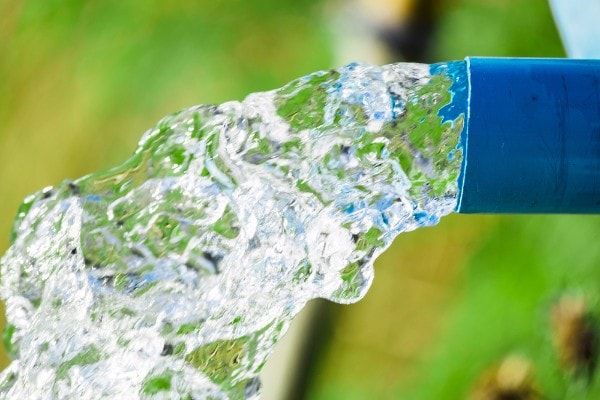4.11.2
Viscosity
Viscosity
Viscosity
An important property of fluids is their viscosity.


Viscosity
Viscosity
- The viscosity of a fluid measures how resistant the fluid is to moving or being deformed.
- Orange juice has a low viscosity as it flows easily when you pour it into a glass.
- Golden syrup has a high viscosity as it flows slowly when you pour it over pancakes.


Viscous drag
Viscous drag
- Viscous drag is the frictional force you feel as you move through a fluid.
- For objects moving in the air, this is called air resistance.
- Viscous drag is what makes trying to run in a swimming pool so difficult.
Stokes' Law
Stokes' Law
Stokes' Law describes viscous drag.


Viscous drag
Viscous drag
- Viscosity is the measure of how thick a fluid is.
- When an object is moved through a viscous fluid, it will experience a resistive force known as viscous drag.


Stokes' law
Stokes' law
- Stokes' law states that the viscous drag will be given by the equation:
- .
- is the viscous drag.
- is the viscosity of the fluid.
- is the radius of the moving object.
- is the velocity of the moving object.


Limitations of Stokes' law
Limitations of Stokes' law
- Stokes' law only applies to slow-moving and small objects.
- Stokes' law also assumes that the object is perfectly spherical.
1Principles of Science I
1.1Structure & Bonding
1.1.1Atomic Model
1.1.2Electron Shells, Sub-Shells & Orbitals
1.1.3Ionic Bonding
1.1.4Representing Ionic Bonds
1.1.5Covalent Bonding
1.1.6Representing Covalent Bonds
1.1.7Metallic Bonding
1.1.8Intermolecular Forces
1.1.9Intermolecular Forces 2
1.1.10End of Topic Test - Bonding
1.1.11Relative Masses
1.1.12The Mole
1.1.13Molar Calculations
1.1.14Molar Calculations 2
1.1.15Empirical & Molecular Formulae
1.1.16Balanced Equations
1.1.17Percentage Yield
1.1.18End of Topic Test - Amount of Substance
1.2Properties of Substances
1.2.1The Periodic Table
1.2.2Ionisation Energy
1.2.3Factors Affecting Ionisation Energies
1.2.4Trends of Ionisation
1.2.5Trends in the Periodic Table
1.2.6Polarity
1.2.7Metals & Non-Metals
1.2.8Alkali Metals
1.2.9Alkaline Earth Metals
1.2.10Reactivity of Alkaline Earth Metals
1.2.11Redox
1.2.12Transition Metals
1.2.13Redox Reactions of Transition Metals
1.3Cell Structure & Function
1.4Cell Specialisation
1.5Tissue Structure & Function
1.5.1Human Gas Exchange
1.5.2Blood Vessels
1.5.3Atherosclerosis
1.5.4Skeletal Muscle
1.5.5Slow & Fast Twitch Fibres
1.5.6Neurones
1.5.7Speed of Transmission
1.5.8Action Potentials
1.5.9End of Topic Test - Neurones & Action Potentials
1.5.10Synapses
1.5.11Types of Synapse
1.5.12Medical Application
1.5.13End of Topic Test - Synapses
1.5.14Chemical Brain Imbalances
1.5.15Effect of Drugs on the Brain
1.6Working with Waves
1.7Waves in Communication
2Practical Scientific Procedures and Techniques
3Science Investigation Skills
3.1Scientific Processes
3.2Data Handling & Analysis
3.3Enzymes in Action
3.4Diffusion
3.5Plants & Their Environment
3.6Energy Content in Fuels
4Principles of Science II
4.1Extracting Elements
4.2Relating Properties to use of Substances
4.3Organic Chemistry
4.4Energy Changes in Industry
4.5The Circulatory System
4.5.1The Circulatory System
4.5.2Blood Vessels
4.5.3Blood Transfusion & the ABO Rhesus System
4.5.4The Heart
4.5.5The Cardiac Cycle
4.5.6Cardiac Output
4.5.7Coordination of Heart Action
4.5.8Heart Dissection
4.5.9Controlling Heart Rate
4.5.10Electrocardiograms
4.5.11Cardiovascular Disease
4.5.12Investigating Heart Rates
4.6Ventilation & Gas Exchange
4.7Urinary System
4.9Thermal Physics
4.9.1Power & Efficiency
4.9.2Work & Energy
4.9.3Conservation of Energy
4.9.4Pressure
4.9.5First Law of Thermodynamics
4.9.6Second Law of Thermodynamics
4.9.7Heat Engines, Heat Pumps & Refrigerators
4.9.8Non-Flow Processes
4.9.9p-V Diagrams
4.9.10Ideal Gases
4.9.11Ideal Gases 2
4.9.12Thermal Energy Transfer
4.9.13Thermal Energy Transfer Experiments
4.10Materials
5Contemporary Issues in Science
5.1Contemporary Issues in Science
5.2Analysing Scientific Information
Jump to other topics
1Principles of Science I
1.1Structure & Bonding
1.1.1Atomic Model
1.1.2Electron Shells, Sub-Shells & Orbitals
1.1.3Ionic Bonding
1.1.4Representing Ionic Bonds
1.1.5Covalent Bonding
1.1.6Representing Covalent Bonds
1.1.7Metallic Bonding
1.1.8Intermolecular Forces
1.1.9Intermolecular Forces 2
1.1.10End of Topic Test - Bonding
1.1.11Relative Masses
1.1.12The Mole
1.1.13Molar Calculations
1.1.14Molar Calculations 2
1.1.15Empirical & Molecular Formulae
1.1.16Balanced Equations
1.1.17Percentage Yield
1.1.18End of Topic Test - Amount of Substance
1.2Properties of Substances
1.2.1The Periodic Table
1.2.2Ionisation Energy
1.2.3Factors Affecting Ionisation Energies
1.2.4Trends of Ionisation
1.2.5Trends in the Periodic Table
1.2.6Polarity
1.2.7Metals & Non-Metals
1.2.8Alkali Metals
1.2.9Alkaline Earth Metals
1.2.10Reactivity of Alkaline Earth Metals
1.2.11Redox
1.2.12Transition Metals
1.2.13Redox Reactions of Transition Metals
1.3Cell Structure & Function
1.4Cell Specialisation
1.5Tissue Structure & Function
1.5.1Human Gas Exchange
1.5.2Blood Vessels
1.5.3Atherosclerosis
1.5.4Skeletal Muscle
1.5.5Slow & Fast Twitch Fibres
1.5.6Neurones
1.5.7Speed of Transmission
1.5.8Action Potentials
1.5.9End of Topic Test - Neurones & Action Potentials
1.5.10Synapses
1.5.11Types of Synapse
1.5.12Medical Application
1.5.13End of Topic Test - Synapses
1.5.14Chemical Brain Imbalances
1.5.15Effect of Drugs on the Brain
1.6Working with Waves
1.7Waves in Communication
2Practical Scientific Procedures and Techniques
3Science Investigation Skills
3.1Scientific Processes
3.2Data Handling & Analysis
3.3Enzymes in Action
3.4Diffusion
3.5Plants & Their Environment
3.6Energy Content in Fuels
4Principles of Science II
4.1Extracting Elements
4.2Relating Properties to use of Substances
4.3Organic Chemistry
4.4Energy Changes in Industry
4.5The Circulatory System
4.5.1The Circulatory System
4.5.2Blood Vessels
4.5.3Blood Transfusion & the ABO Rhesus System
4.5.4The Heart
4.5.5The Cardiac Cycle
4.5.6Cardiac Output
4.5.7Coordination of Heart Action
4.5.8Heart Dissection
4.5.9Controlling Heart Rate
4.5.10Electrocardiograms
4.5.11Cardiovascular Disease
4.5.12Investigating Heart Rates
4.6Ventilation & Gas Exchange
4.7Urinary System
4.9Thermal Physics
4.9.1Power & Efficiency
4.9.2Work & Energy
4.9.3Conservation of Energy
4.9.4Pressure
4.9.5First Law of Thermodynamics
4.9.6Second Law of Thermodynamics
4.9.7Heat Engines, Heat Pumps & Refrigerators
4.9.8Non-Flow Processes
4.9.9p-V Diagrams
4.9.10Ideal Gases
4.9.11Ideal Gases 2
4.9.12Thermal Energy Transfer
4.9.13Thermal Energy Transfer Experiments
4.10Materials
5Contemporary Issues in Science
5.1Contemporary Issues in Science
5.2Analysing Scientific Information
Unlock your full potential with Seneca Premium
Unlimited access to 10,000+ open-ended exam questions
Mini-mock exams based on your study history
Unlock 800+ premium courses & e-books